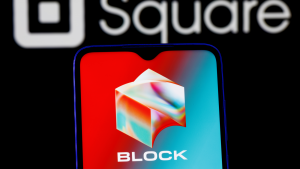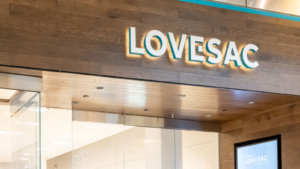
In today’s choppy market, going against the grain and buying when others are fearful takes conviction. But for those with a long-term mindset, undervalued growth stocks provide an opportunity for investors to generate multi-bagger returns. With interest rates still rising and economic uncertainty ahead, it’s understandable why some investors are feeling fearful. However, I believe there are still opportunities amidst the volatility for those willing to tune out the noise and focus on fundamentals.
That’s because the robust labor market and steady GDP growth indicate the economy remains strong. This leads me to believe the worst of the rate hikes are likely behind us for now. And when the market gains confidence that rates have peaked, undervalued stocks could begin to rebound in a big way.
Many growth stocks have already been beaten down significantly from their highs. The pessimism is largely baked in at this point. Even the slightest bit of positive news could catapult some of these unloved names considerably higher. Thus, scooping up shares of select undervalued growth stocks now (before the inevitable rebound) offers a chance at huge returns over time. The upside far outweighs the downside risk, given how depressed valuations already are. Let’s look at the three stocks I’m watching closely right now.
Block (SQ)

Block (NYSE:SQ), formerly known as Square, has often been described as a competitor to PayPal (NASDAQ:PYPL) in the digital payments space. As a result, the two stocks have typically been lumped together and moved in tandem. However, it seems the narrative may be shifting as, Block separates itself from PayPal in a few key ways.
PayPal has been profitable for years and regularly executes share buybacks, yet growth is decelerating. Active account growth actually turned negative in its most recent quarter. Block, on the other hand, has prioritized growth over profits but now sits on the cusp of profitability with massive top-line expansion still underway. In my view, this divergence suggests Block has emerged as a superior fintech play.
Looking at the long-run prospectus for these companies, Block is expected to become profitable this year with EPS of $1.90. Profits are then forecasted to grow rapidly, reaching $15.25 per share in 2032. With the stock trading around $52, this implies a forward price-earnings ratio of just 3.4-times in a decade. Even looking at 2026 projections, the company’s price-earnings ratio sits below 11-times. To me, these valuations make Block a clear bargain buy.
Naturally, profits may take longer to materialize if the economy worsens. But the company has an impressive track record of adaptability, shifting strategies nimbly amid changing conditions. I believe Block’s growth trajectory remains intact over the long haul. For investors with a multi-year time horizon, current levels seem to offer an attractive entry point.
Lovesac (LOVE)

Lovesac (NASDAQ:LOVE), along with other furniture retailers, has endured a difficult 2023. The stock has even plunged below pre-pandemic levels in the wake of Bed Bath & Beyond’s (OTCMKTS:BBBYQ) high-profile collapse. Undeniably, some caution is warranted, given slowing revenue growth and shrinking profits. However, I believe the long-term growth narrative remains compelling at current valuations.
While this year’s results are under pressure, analysts expect Lovesac’s earnings to surge nearly 1,000% over the next decade. Revenue is projected to grow at a nearly double-digit pace over the same period. With the stock trading around $17 per share, this translates to a forward price-earnings ratio of just 4-times for 2026 earnings.
The market is clearly pricing in a recessionary scenario, but I contend the negativity is overdone. Lovesac has consistently gained market share thanks to its unique business model and product lineup. As economic conditions eventually improve, the company seems poised to get back on a growth trajectory.
Of course, the path back to prosperity may not be linear. However, Lovesac has shown resilience amid prior slowdowns. With shares trading at just 0.4-times forward sales, I believe much of the risk is already priced in at current levels. For investors able to tolerate some turbulence, I see the company’s long-term growth story as both intact and compelling.
Frontline (FRO)

At first glance, Frontline (NYSE:FRO) may not appear deeply undervalued based on historical metrics. The stock has surged more than 234% over the past five years, with the pace of gains accelerating recently. This outstanding performance can largely be attributed to ongoing geopolitical conflicts and subsequent sanctions disrupting oil supplies over the past couple years. Tanker companies like Frontline have been in high demand as a result.
Understandably, some see FRO stock as overvalued since the current geopolitical tensions could potentially ease someday. However, in my view, this line of thinking underestimates how long sanctions are likely to remain in place. Even in the unlikely event of a near-term resolution, restrictions would probably continue for years, if not decades.
With that perspective, I believe Frontline still has ample room for expansion as tanker demand looks set to persist. The company continues posting stunning growth, with earnings and revenue on pace to essentially double by the end of 2026. Despite this rapid growth, shares still trade at a forward price-earnings ratio of just 7-times based on 2023 projections.
Additionally, Frontline pays out a massive 12.7% dividend yield that shareholders can reinvest to compound returns. While the stock may appear expensive relative to past levels, current valuations look highly attractive for the growth still ahead. As long as the sanctions regime holds, Frontline seems poised to continue delivering outstanding shareholder value.
On the date of publication, Omor Ibne Ehsan did not have (either directly or indirectly) any positions in the securities mentioned in this article. The opinions expressed in this article are those of the writer, subject to the InvestorPlace.com Publishing Guidelines.




